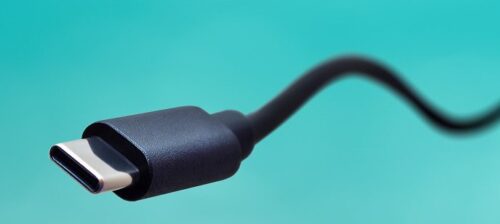
10.13.23- CEPro
Apple’s move to replace its Lighting port with USB-C continues a trend in the electronics industry of adopting the multi-faceted standard.
Apple’s new iPhone 15 features a USB-C port instead of tech giant’s traditional Lightning port for the first time, indicative of a much larger trend in consumer electronics of manufacturers offering USB-C to connect a range of devices.
While this helps iPhone users and Android users share chargers and discontinues Apple’s practice of forcing consumers to purchase their proprietary cables to charge and transfer data, it continues a trend in the custom electronic integration industry: positioning the USB-C cable as a universal cable capable of transferring high-speed data and power, says Brandon White, director of new product development at Vanco International.
In fact, even CEDIA’s Tech Council in 2016 predicted that USB-C would become a de-facto standard. (The declaration can be found on page 10 alongside many other predictions for those curious.)
“Is it there now? No, but I think we’re pulling up to the driveway,” White says.
What is USB-C?
While the USB-C cable is thought to be the “complete cable,” we’ve heard this phrasing before, White cautions. The HDMI with Ethernet cable was also thought to be the Swiss army knife of cables, and while it did open the door for some functionalities, it never became the de-facto standard that was once hoped.

The Future of Digital Lighting & Control
As a custom integrator, lighting is in demand. Effective communication, education and showcasing the value proposition of LED light fixtures in conjunction with integrative control systems are the keys to overcoming challenges and closing sales in this specialized market. Join us as we discuss the future of digital lighting and control with David Warfel from Light Can Help You and Patrick Laidlaw and Mark Moody from AiSPIRE. Register Now!
USB-C, however, may be that jack-of-all-trades cable. The cable supports reverse insertion, transmits data at a higher rate than other cables, transmits 4K video and other AV signals, and provides more power and charging than legacy USB cables.
“I think it absolutely can be, and is, because of what it can do in terms of the audio and video side of it,” White says. “It definitely has a complete portfolio and has helped a lot of companies be able to minimize the number of ports because one port does it all.”
Over the next few years, integrators, homeowners, and users should expect to see more and more products with USB-C functionality, and we should see USB-C move forward as the universal solution the industry has been calling for over many years.
“It’s just that next step in the evolution and development of products for AV, collaboration and the hybrid states of work and home,” White says.
Why is USB-C Growing?
With the ability to carry high-speed data and signals, transmit 4K video, and essentially replace legacy USB connectors, HDMI, DisplayPort and 3.5mm audio jacks, USB-C cables help make installations and configurations easier, while also making it easier for end users.
This continues a trend in the AV industry of devices becoming easier to set up, manage and use. For example, conference room devices like all-in-one collaboration bars and integrated conferencing kits are making installation and integration much more seamless, and manufacturers are focused on improving end user adoption by keeping their products simple.
According to White, simplicity is the “name of the game” in both residential and commercial AV.
“I’m all for keeping things simple, and I think USB-C helps alleviate a lot of that,” he says.
What to Tell Clients About USB-C
When designing projects, integrators should ensure that they are including products that have USB-C as a way of helping the customer protect their investments for the future.
However, integrators shouldn’t move too quickly and ignore current standards that may be more familiar to some users.
“Have those bases covered and communicate the needs of today as well as what’s coming down the pike tomorrow,” White says. “USB-C should be implemented and at least highly suggested.”
If you enjoyed this article and want to receive more valuable industry content like this, click here to sign up for our digital newsletters!
ABOUT THE AUTHOR

Zachary Comeau is the senior editor of CE Pro. He comes from a journalism background with more than a decade of years of professional experience writing for Commercial Integrator, My TechDecisions, and several daily newspapers and industry trade publications in Massachusetts. He joined CE Pro in June 2023.
View Zachary Comeau‘s complete profile
